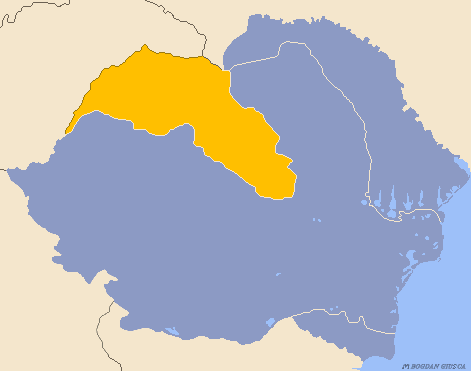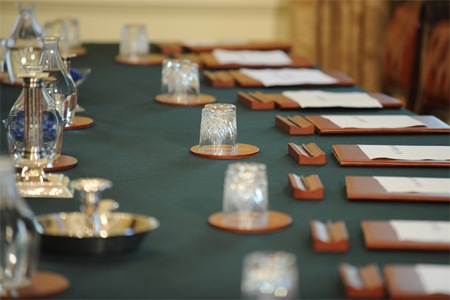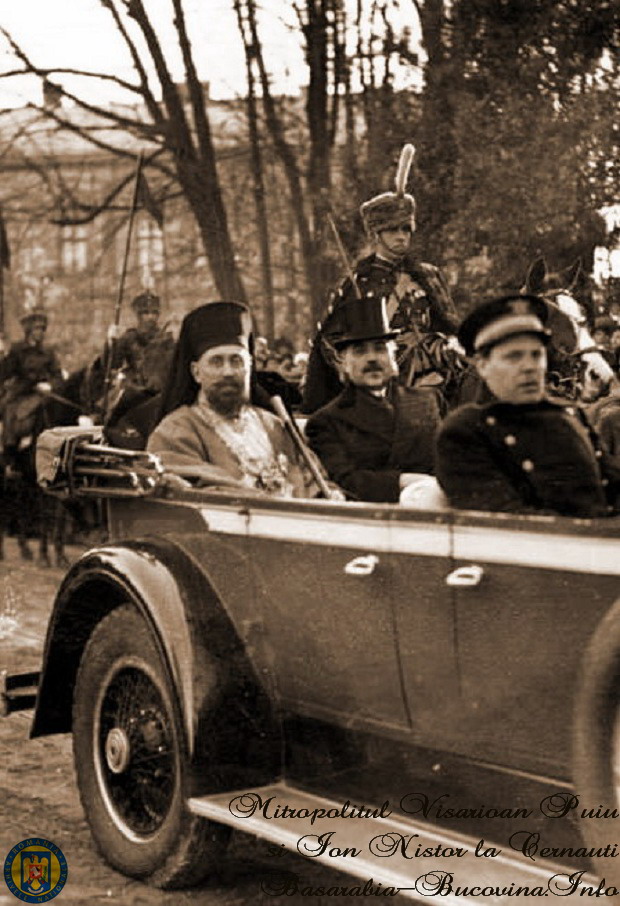|
First Tătărăscu Cabinet
The first cabinet of Gheorghe Tătărăscu was the government of Romania from 5 January to 1 October 1934. Ministers The ministers of the cabinet were as follows:Stelian Neagoe - "Istoria guvernelor României de la începuturi - 1859 până în zilele noastre - 1995" (Ed. Machiavelli, Bucharest, 1995) *President of the Council of Ministers: :*Gheorghe Tătărăscu (5 January - 1 October 1934) *Minister of the Interior: :*Ion Inculeț (5 January - 1 October 1934) *Minister of Foreign Affairs: :*Nicolae Titulescu (5 January - 1 October 1934) *Minister of Finance: :*Victor Slăvescu (5 January - 1 October 1934) *Minister of Justice: :*Victor Antonescu (5 January - 1 October 1934) *Minister of National Defence: :*Gen. Nicolae Uică (5 January - 31 May 1934) :*(interim) Gheorghe Tătărăscu (31 May - 27 June 1934) :*Gen. Paul Angelescu (27 June - 1 October 1934) *Minister of Armaments: :*Gheorghe Tătărăscu (5 January - 1 October 1934) *Minister of Agriculture and Property :*Gheor ... [...More Info...] [...Related Items...] OR: [Wikipedia] [Google] [Baidu] |
Gheorghe Tătărescu
: ''For the artist, see Gheorghe Tattarescu.'' Gheorghe I. Tătărescu (also known as ''Guță Tătărescu'', with a slightly antiquated pet form of his given name; 2 November 1886 – 28 March 1957) was a Romanian politician who served twice as Prime Minister of Romania (1934–1937; 1939–1940), three times as List of Romanian Foreign Ministers, Minister of Foreign Affairs (''interim'' in 1934 and 1938, appointed to the office in 1945-1947) and once as Ministry of National Defence of Romania, Minister of War (1934). Representing the "young liberals" faction inside the National Liberal Party (Romania, 1875), National Liberal Party (PNL), Tătărescu began his political career as a collaborator of Ion G. Duca, becoming noted for his anticommunism and, in time, for his conflicts with the PNL's leader Dinu Brătianu and the Foreign Minister Nicolae Titulescu. During his first time in office, he moved closer to King Carol II of Romania, Carol II and led an ambivalent policy toward the ... [...More Info...] [...Related Items...] OR: [Wikipedia] [Google] [Baidu] |
Constantin D
Constantin is an Aromanian, Megleno-Romanian and Romanian male given name. It can also be a surname. For a list of notable people called Constantin, see Constantine (name). See also * Constantine (name) Constantine ( or ; Latin: ''Cōnstantīnus'', Greek: , ''Kōnstantînos'') is a masculine and feminine (in French for example) given name and surname which is derived from the Latin name ''Constantinus'', a hypocoristic of the first names Constans ... * Konstantin References {{Reflist Aromanian masculine given names Megleno-Romanian masculine given names Romanian masculine given names Romanian-language surnames ... [...More Info...] [...Related Items...] OR: [Wikipedia] [Google] [Baidu] |
Cabinets Disestablished In 1934
A cabinet is a body of high-ranking state officials, typically consisting of the executive branch's top leaders. Members of a cabinet are usually called cabinet ministers or secretaries. The function of a cabinet varies: in some countries, it is a collegiate decision-making body with collective responsibility, while in others it may function either as a purely advisory body or an assisting institution to a decision-making head of state or head of government. Cabinets are typically the body responsible for the day-to-day management of the government and response to sudden events, whereas the legislative and judicial branches work in a measured pace, in sessions according to lengthy procedures. In some countries, particularly those that use a parliamentary system (e.g., the UK), the Cabinet collectively decides the government's direction, especially in regard to legislation passed by the parliament. In countries with a presidential system, such as the United States, ... [...More Info...] [...Related Items...] OR: [Wikipedia] [Google] [Baidu] |
Cabinets Established In 1934
A cabinet is a body of high-ranking state officials, typically consisting of the executive branch's top leaders. Members of a cabinet are usually called cabinet ministers or secretaries. The function of a cabinet varies: in some countries, it is a collegiate decision-making body with collective responsibility, while in others it may function either as a purely advisory body or an assisting institution to a decision-making head of state or head of government. Cabinets are typically the body responsible for the day-to-day management of the government and response to sudden events, whereas the legislative and judicial branches work in a measured pace, in sessions according to lengthy procedures. In some countries, particularly those that use a parliamentary system (e.g., the UK), the Cabinet collectively decides the government's direction, especially in regard to legislation passed by the parliament. In countries with a presidential system, such as the United States, ... [...More Info...] [...Related Items...] OR: [Wikipedia] [Google] [Baidu] |
Cabinets Of Romania
A cabinet is a body of high-ranking state officials, typically consisting of the executive branch's top leaders. Members of a cabinet are usually called cabinet ministers or secretaries. The function of a cabinet varies: in some countries, it is a collegiate decision-making body with collective responsibility, while in others it may function either as a purely advisory body or an assisting institution to a decision-making head of state or head of government. Cabinets are typically the body responsible for the day-to-day management of the government and response to sudden events, whereas the legislative and judicial branches work in a measured pace, in sessions according to lengthy procedures. In some countries, particularly those that use a parliamentary system (e.g., the UK), the Cabinet collectively decides the government's direction, especially in regard to legislation passed by the parliament. In countries with a presidential system, such as the United States, the Cab ... [...More Info...] [...Related Items...] OR: [Wikipedia] [Google] [Baidu] |
Second Tătărăscu Cabinet
The second cabinet of Gheorghe Tătărăscu was the government of Romania from 2 October 1934 to 28 August 1936. Ministers The ministers of the cabinet were as follows: *President of the Council of Ministers: :*Gheorghe Tătărăscu (2 October 1934 - 28 August 1936) *Minister of the Interior: :*Ion Inculeț (2 October 1934 - 28 August 1936) *Minister of Foreign Affairs: :*(interim) Gheorghe Tătărăscu (2 - 10 October 1934) :*Nicolae Titulescu (10 October 1934 - 28 August 1936) *Minister of Finance: :*Victor Slăvescu (2 October 1934 - 1 February 1935) :*Victor Antonescu (1 February 1935 - 28 August 1936) *Minister of Justice: :*Victor Antonescu (2 October 1934 - 1 February 1935) :* Valeriu Pop (1 February 1935 - 28 August 1936) *Minister of National Defence: :*Gen. Paul Angelescu (2 October 1934 - 28 August 1936) *Minister of Armaments: :*Gheorghe Tătărăscu (2 October 1934 - 28 August 1936) *Minister of Agriculture and Property :* Vasile P. Sassu (2 October 1934 - 28 August ... [...More Info...] [...Related Items...] OR: [Wikipedia] [Google] [Baidu] |
Angelescu Cabinet
The cabinet of Constantin Angelescu was the government of Romania from 30 December 1933 to 3 January 1934. Ministers The ministers of the cabinet were as follows:Stelian Neagoe - "Istoria guvernelor României de la începuturi - 1859 până în zilele noastre - 1995" (Ed. Machiavelli, Bucharest, 1995) *President of the Council of Ministers: :* Constantin Angelescu (30 December 1933 - 3 January 1934) *Minister of the Interior: :*Ion Inculeț (30 December 1933 - 3 January 1934) *Minister of Foreign Affairs: :*Nicolae Titulescu (30 December 1933 - 3 January 1934) *Minister of Finance: :*Constantin I. C. Brătianu (30 December 1933 - 3 January 1934) *Minister of Justice: :* Victor Antonescu (30 December 1933 - 3 January 1934) *Minister of Public Instruction, Religious Affairs, and the Arts: :* Constantin Angelescu (30 December 1933 - 3 January 1934) *Minister of National Defence: :*Gen. Nicolae Uică (30 December 1933 - 3 January 1934) *Minister of Agriculture and Property :* Gheor ... [...More Info...] [...Related Items...] OR: [Wikipedia] [Google] [Baidu] |
Cabinet Of Romania
, image = , caption=Logo of the Government of Romania , date = 1862 , state = Romania , address = Victoria PalaceBucharest , appointed = President , leader_title = Prime Minister , main_organ = , ministries = , responsible = Parliament of Romania , url = http://gov.ro/en The Government of Romania ( ro, Guvernul României) forms one half of the executive branch of the government of Romania (the other half being the office of the President of Romania). It is headed by the Prime Minister of Romania, and consists of the ministries, various subordinated institutions and agencies, and the 42 prefectures. The seat of the Romanian Government is at Victoria Palace in Bucharest. The Government is the public authority of executive power that functions on the basis of the vote of confidence granted by Parliament, ensuring the achievement of the country's domestic and foreign policy and that ex ... [...More Info...] [...Related Items...] OR: [Wikipedia] [Google] [Baidu] |
Constantin Xeni
Constantin is an Aromanian, Megleno-Romanian and Romanian male given name. It can also be a surname. For a list of notable people called Constantin, see Constantine (name). See also * Constantine (name) * Konstantin The first name Konstantin () is a derivation from the Latin name ''Constantinus'' (Constantine) in some European languages, such as Russian and German. As a Christian given name, it refers to the memory of the Roman emperor Constantine the Great. ... References {{Reflist Aromanian masculine given names Megleno-Romanian masculine given names Romanian masculine given names Romanian-language surnames ... [...More Info...] [...Related Items...] OR: [Wikipedia] [Google] [Baidu] |
Ion Nistor
Ion I. Nistor (August 16, 1876 – November 11, 1962) was a Romanian historian and politician. He was a titular member of the Romanian Academy from 1915 and a professor at the universities of Cernăuți and Bucharest, while also serving as Minister of State for Bukovina, Minister of Public Works, Minister of Labor, and Minister of Religious Affairs and the Arts with a number of governments from 1918 to 1940. Biography Early life and education Nistor was born into a family of peasants in the Bivolărie hamlet of Vicovu de Sus, Bukovina; in Austria-Hungary at the time, it is now included in Suceava County, Romania. He studied at the local school in Vicovu de Sus, then in Rădăuți, first at the elementary school and then at the German High School, getting his ''Matura'' in 1897. He then studied Philosophy and Literature at the University of Czernowitz and between 1898 and 1900, he completed his military service in the Austro-Hungarian Army, serving in Polei and in Vienna. He ... [...More Info...] [...Related Items...] OR: [Wikipedia] [Google] [Baidu] |
Alexandru Lapedatu
Alexandru I. Lapedatu (14 September 1876 – 30 August 1950) was Cults and Arts and State minister of Romania, President of the Senate of Romania, member of the Romanian Academy, its president and general secretary. Family Alexandru Lapedatu was the son of Ioan Alexandru Lapedatu, with a Ph.D. from the University of Brussels, Romanian poet, writer, journalist and professor for classical languages at the Higher Greek-Orthodox Romanian College in Brașov (today, Andrei Şaguna National College). Alexandru Lapedatu had a twin brother, Ion Lapedatu, economist, politician and Governor of the National Bank of Romania. The twins became orphans when they were one and a half years old. Their mother could only rely on a modest social help from the Brașov municipality and some support from her family. Alexandru Lapedatu married Victoria Pană (1878–1965) on 1 June 1911; a widow with two children from her first marriage, Mircea and Maria Lipăneanu. They had a daughter, Ana Victoria, a ... [...More Info...] [...Related Items...] OR: [Wikipedia] [Google] [Baidu] |
Ion Costinescu
An ion () is an atom or molecule with a net electrical charge. The charge of an electron is considered to be negative by convention and this charge is equal and opposite to the charge of a proton, which is considered to be positive by convention. The net charge of an ion is not zero because its total number of electrons is unequal to its total number of protons. A cation is a positively charged ion with fewer electrons than protons while an anion is a negatively charged ion with more electrons than protons. Opposite electric charges are pulled towards one another by electrostatic force, so cations and anions attract each other and readily form ionic compounds. Ions consisting of only a single atom are termed atomic or monatomic ions, while two or more atoms form molecular ions or polyatomic ions. In the case of physical ionization in a fluid (gas or liquid), "ion pairs" are created by spontaneous molecule collisions, where each generated pair consists of a free electron and a ... [...More Info...] [...Related Items...] OR: [Wikipedia] [Google] [Baidu] |



.jpg)



